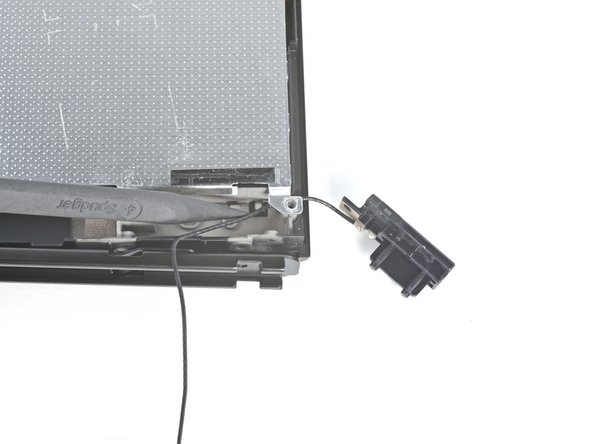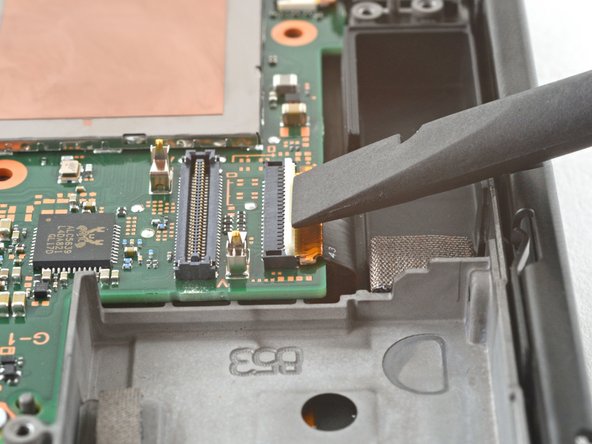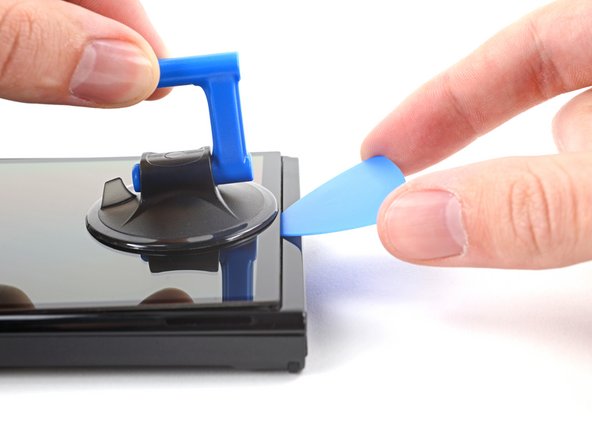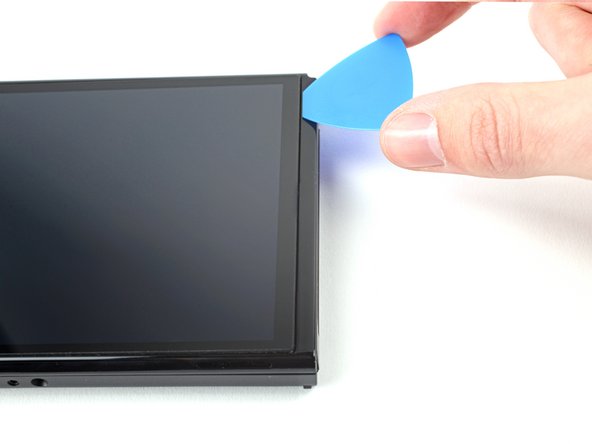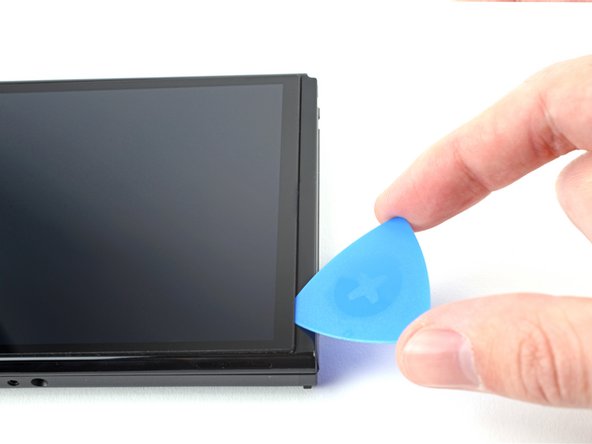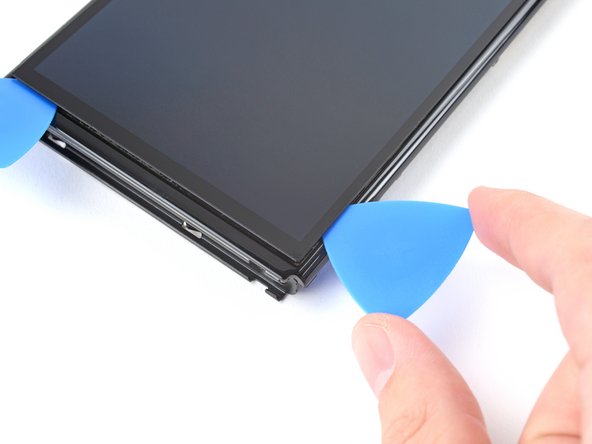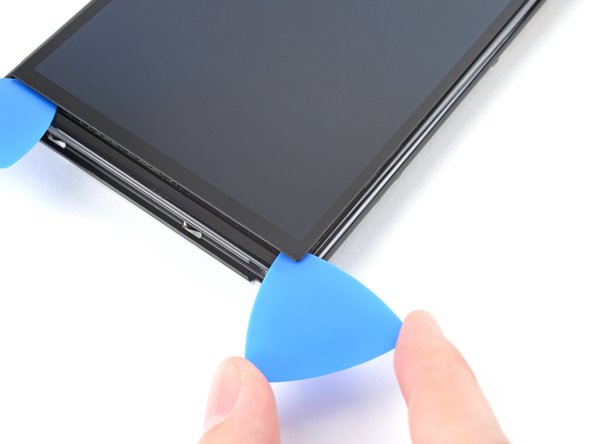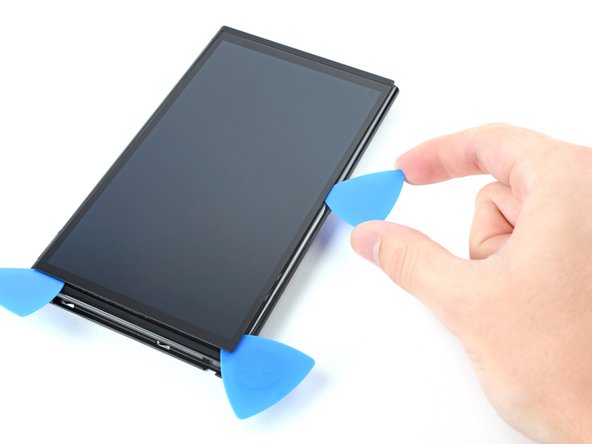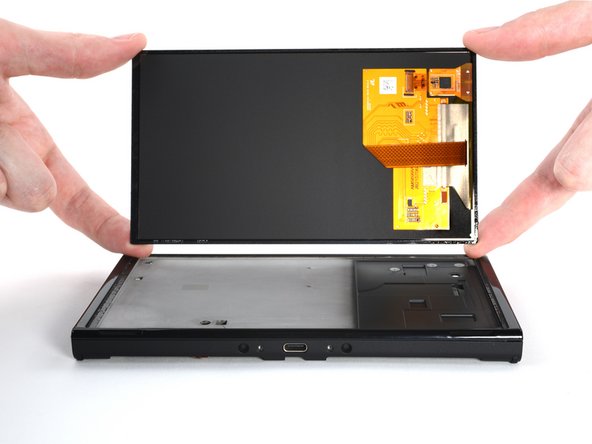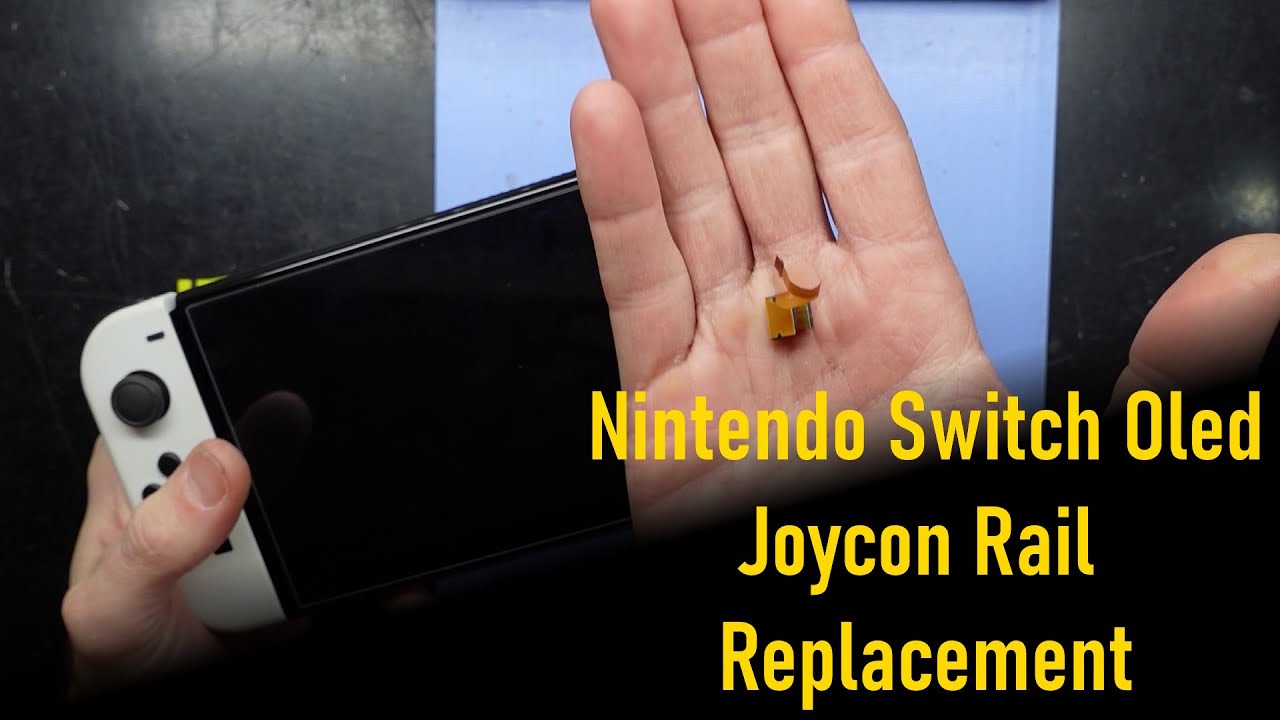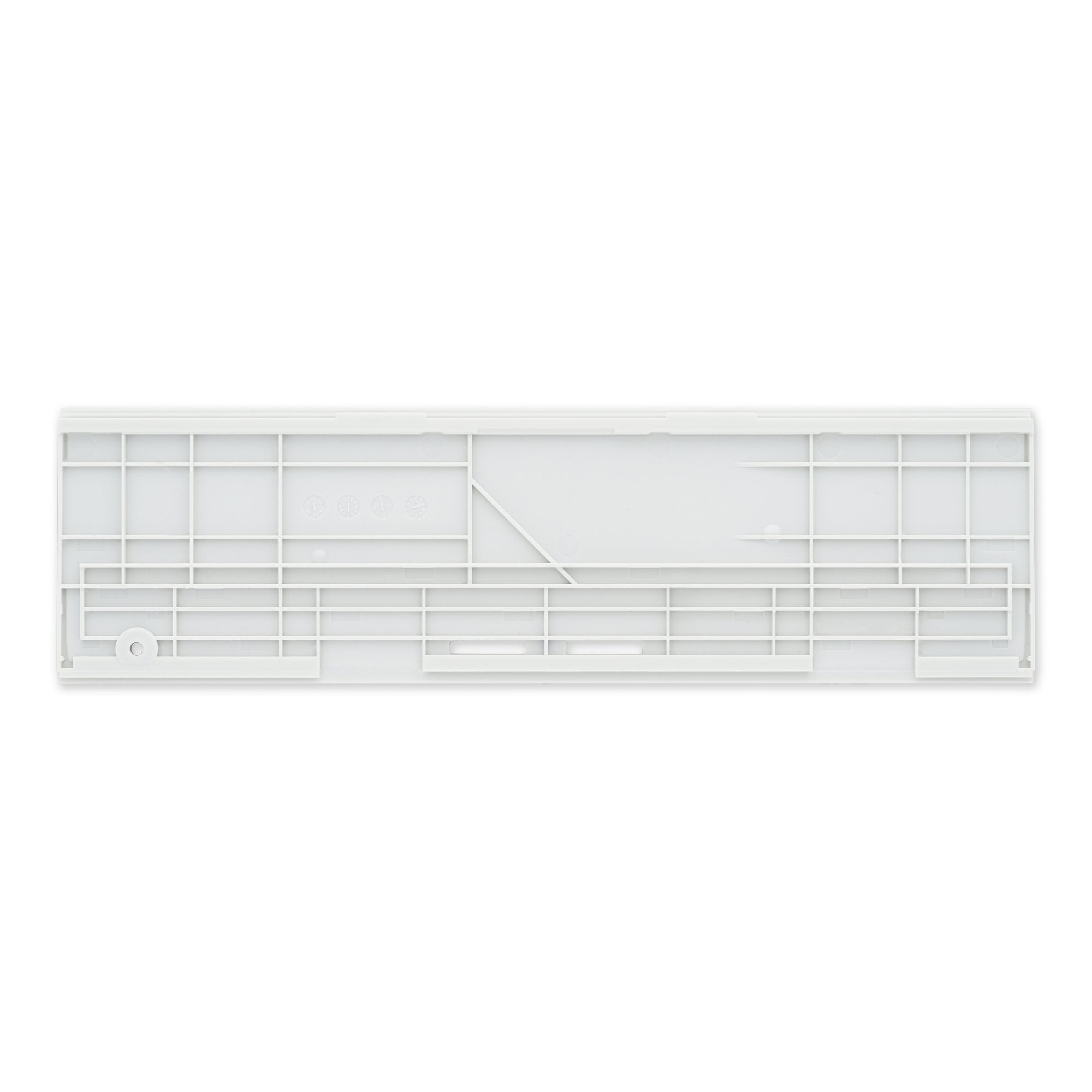How to Replace Nintendo Switch OLED Screen: Step-by-Step Guide
Duration: 45 minutes
Steps: 36 Steps
Heads up! There’s a good chance you could accidentally crack that delicate display if you’re not careful during this step.
For your own safety, make sure the battery is under 25% before you start taking apart your Switch.
Ready to replace your Nintendo Switch OLED screen? Let’s do this! Unlike the original model’s plastic cover and LCD setup, the OLED version has a glass cover bonded to an OLED display. Translation? It’s delicate, so take your time and be gentle—especially when prying it open. Heat is your best friend here, so use plenty of it to loosen things up. Safety first: drain your battery to below 25% before diving in to reduce the risk of fire if something accidentally pokes the battery. Got a swollen battery? Handle it with extra care. The screws are JIS, but a Phillips screwdriver can pinch-hit if needed—just go easy, so you don’t strip them. Oh, and when you pull off the shield plate, you’ll need to refresh the thermal compound between it and the heatsink. Regular thermal paste won’t cut it here; go for K5 Pro viscous thermal paste for the best fit. You’ll also need some fresh adhesive to finish the job. If things feel tricky, you can always schedule a repair.
Step 1
Before diving into this repair adventure, ensure your device is fully powered down and ready for action.
– Alright, here’s the move: Press and hold that little round button chilling on the back of the Joy Con controller.
– While you’re keeping that button pressed, smoothly slide the controller upward like a pro.
Step 2
Now, just rinse and repeat this process for the other Joy Con! You’ve got this!
– Keep sliding that Joy Con up until it pops right off the console. You’ve got this!
Step 3
Avoid stripping these tight screws by applying firm downward force, taking it slow, and trying a different JIS or Phillips driver if they’re being stubborn.
– Grab your trusty Phillips or JIS driver and remove the 2 mm-long screw holding the top of the rear case to the frame.
Step 4
– Grab your trusty Phillips driver and take out the two 2 mm screws holding the bottom of the rear case to the frame.
Step 5
To keep those pesky screws from getting stripped, apply a solid downward push, take your time, and if they’re being stubborn, give a JIS 000 or PH 000 driver a shot. You’ve got this!
– Grab your trusty Phillips driver and take out the 3.8 mm screw holding down the right Joy-Con sensor rail to the rear case.
Step 6
– Grab your trusty Phillips driver and unscrew that 3.8 mm bad boy holding the left Joy-Con sensor rail to the rear case. Easy peasy!
Step 7
Got a microSD card tucked in the slot? Go ahead and pop that little guy out before moving on to the next step.
– Let’s get started by flipping up the kickstand on the back of your device – just use your finger to gently lift it up.
Step 8
– Grab your trusty Y00 screwdriver and let’s get to work! Unscrew those two 4.3 mm screws holding the rear case snugly against the frame. You’ve got this!
Step 9
Having a tough time getting the case off? Grab an opening pick and gently nudge those pesky plastic clips up! You’ve got this!
– Gently lift the rear case from the top of your device and pop it off.
Step 10
– Grab the flat end of your trusty spudger and gently nudge up a corner of the tape from the shield plate like you’re peeling off a sticker—nice and easy!
Tools Used
Step 11
– Grab your trusty tweezers or just your fingers, and gently peel back that tape like a pro!
– Keep that tape safe and sound in a tidy spot for when it’s time to put everything back together.
Tools Used
Step 12
– Grab some tweezers or just use your fingers to gently lift and disconnect the primary Wi-Fi antenna’s coaxial cable. Take your time—this cable deserves a little TLC!
– When putting things back together, reconnecting these can be a bit fiddly. Here’s the trick: line each connector up with its socket, then press down gently using the flat end of a spudger. You’ll know it’s good to go when you hear a satisfying snap!
Step 13
– Grab your trusty tweezers or use your fingers to reroute the primary antenna’s coaxial cable out of its slots in the shield plate. You’ve got this!
Tools Used
Step 14
– Time to get started! Use a Phillips driver to carefully remove the two 4.4 mm screws that hold the primary Wi-Fi antenna in place on the shield plate.
Step 15
– Time to get this repair started! Carefully insert an opening pick between the primary Wi-Fi antenna and the shield plate – it’s like a little puzzle piece that needs to fit just right.
– Now, gently pry up with the pick to separate the primary Wi-Fi antenna from the shield plate. You got this! Take your time and be patient, it might take a little wiggling to get them to separate.
Step 16
– Carefully take out the main Wi-Fi antenna—you’re one step closer to tech triumph!
Step 17
– Grab a pair of tweezers or just use your fingers, and gently pop off the secondary Wi-Fi antenna’s coaxial cable. Easy does it!
Tools Used
Step 18
– Use the tip of a spudger to carefully reroute the secondary Wi-Fi antenna’s coaxial cable out of its slot in the frame. Take your time and make sure it’s fully removed before moving on to the next step.
Tools Used
Step 19
– Grab your trusty Phillips driver and let’s get to work! Carefully unscrew the 4.4 mm screw that’s holding the secondary Wi-Fi antenna snug against the shield plate. You’ve got this!
Step 20
Hold off on removing the antenna just yet – its coaxial cable is still snuggled through the frame.
– Slip an opening pick between the secondary Wi-Fi antenna and the shield plate.
– Lift the pick to detach the secondary Wi-Fi antenna from the shield plate.
Step 21
– Grab your trusty spudger and gently guide the secondary Wi-Fi antenna’s coaxial cable out of its cozy little slot in the frame.
– Now, it’s time to say goodbye to the secondary Wi-Fi antenna. Remove it with care!
Tools Used
Step 22
– Grab your trusty Phillips driver and get ready to tackle those six 4.4 mm screws holding the shield plate snugly to the frame. Let’s get this party started!
Step 23
You might feel a little resistance here, and that’s totally fine! The shield plate is gently stuck to the heat sink with some thermal paste, so a bit of extra effort is expected.
– Gently use your fingers to lift the top of the shield plate and guide it away from the frame—easy does it!
– Carefully remove the shield plate and set it aside.
– You’ll notice a thick pink thermal compound connecting the shield plate to the copper heat sink underneath. Whenever you’re taking the shield plate off, check out our thermal paste guide to clean off the old thermal compound and replace it with a fresh one like K5 Pro during reassembly. Keep things cool and running smooth!
Step 24
– Time to get this repair started! Use the point of a spudger to carefully pry up and disconnect the battery – this is a crucial step, so take your time and be gentle.
Tools Used
Step 25
– Grab your tweezers (or just your fingers, no judgment) and peel off that sneaky piece of tape hiding the daughterboard screw.
Tools Used
Step 26
– Grab your trusty Phillips driver and unscrew that 4 mm screw holding the daughterboard snugly to the frame. You’ve got this!
Step 27
The bottom of the daughterboard is hooked up to the motherboard using a press connector – let’s get started with this step!
– Gently slide a spudger between the edge of the daughterboard and the motherboard. Easy does it!
– Use the spudger to carefully lift and disconnect the press connector, then separate the daughterboard from the frame. Take your time here.
– Now, remove the daughterboard. You’ve got this!
– To reconnect press connectors like a pro, line up one side and press gently until it clicks. Then repeat for the other side—just avoid pressing in the middle to keep those pins safe. If the connector gets misaligned, the pins might bend, and that’s a no-go. Take it slow and steady!
Tools Used
Step 28
– Grab an opening tool, spudger, or even your trusty fingernail to carefully lift the hinged locking flap on the display’s ZIF connector.
Tools Used
Step 29
– Grab a trusty pair of tweezers and gently pull the display cable straight out of its cozy connector on the motherboard. You’ve got this!
Tools Used
Step 30
– Gently warm up an iOpener and place it on the right edge of the screen for about 90 seconds to help loosen the adhesive hiding underneath. A little heat goes a long way!
Tools Used
Step 31
If your screen is super cracked, don’t worry! Try slapping a layer of clear packing tape on it – this might just help the suction cup stick. Or, if you’re feeling extra handy, you can use some seriously strong tape instead of the suction handle. And if all else fails, you can even superglue the suction cup to the screen. Just remember to be careful and take your time – and if you need help, you can always schedule a repair
– Once the screen is warm to the touch, stick a suction handle to the bottom edge of the screen as close to the edge as you can.
– Use the suction handle to lift the screen and create a small gap between the screen and the frame.
– Slip an opening pick into the gap between the screen and the frame.
Tools Used
Step 32
– Glide the pick along the right side of the screen to loosen the adhesive.
– Keep the pick in place to stop the adhesive from sticking back.
Step 33
– Warm up your trusty iOpener and give the top edge of your device a cozy 90-second hug to help loosen that pesky adhesive hiding underneath.
Tools Used
Step 34
– Slide a fresh opening pick into the gap you’ve just made.
– Gently twist the opening pick around the top-right corner of your device.
– Keep that opening pick in place to stop the adhesive from sealing back up.
Step 35
– Pop a fresh opening pick into the gap you just made—nice work so far!
– Glide that new pick along the right edge like a pro, heading towards the top-left corner.
– Warm things up again and slice through the remaining edges to free up the adhesive. Keep it steady and smooth!
Step 36
Be careful not to snag any of those ribbon cables on the frame while you’re lifting the screen—slow and steady wins the race!
– Carefully lift the screen off the device and guide the display cable through the frame as you go.
– If the screen adhesive still has some stickiness, you’re good to reuse it. If not, swap it out with some trusty double-sided tape, like Tesa tape.
– When putting everything back together, don’t forget to thread the display cable through the frame before locking down the screen adhesive.
Success!


















































